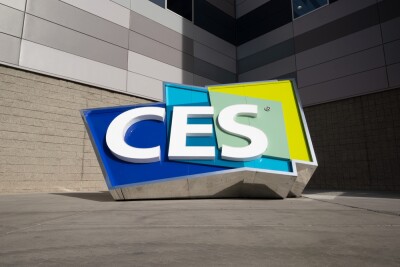If you’re not following closely the performance of SpaceX’s Dragon capsule and its docking with the International Space Station then you really just aren’t interested in the progress of science and technology. This is some fascinating stuff. Luckily, there’s a lidar component to all of it, which means I get to spend time “at work” reading all about it.
The good news is that the lidar portion, ASC’s DragonEye flash lidar system (approved last year for space missions by NASA), passed its big test. It performed well enough to get the Dragon capsule into position so that astronauts could reach out and grab it, but the whole situation was not without its heart-pounding moments.
Here’s a good write-up of what happened as Dragon approached the ISS from Wired’s Autopia. Essentially, ISS wasn’t about to let Dragon just cozy on up without running some tests first. Everyone, from NASA to SpaceX, had to be confident that if something started to go wrong, that could be communicated and Dragon could reverse course and get out of dodge. So they tested moving Dragon closer, stopping, and then turning around a couple of times before everyone was confident to move forward.
Then this happened:
As time progressed, some questions were raised from the data being analyzed from Dragon’s thermal image sensors and the on-board LIDAR (light detection and ranging) sensors. The two different devices are used to independently measure the distance between the two spacecraft. This information is then used by Dragon’s guidance system as it approaches the ISS. The data provided by the thermal cameras was causing the engineers to further evaluate the sensor.
Dragon was sent to an unplanned hold position at 200 meters in hopes of giving the thermal sensors a chance to obtain better data on the position of Dragon relative to the ISS.
Whew. Turned out not to be a big deal. I’d love to be in that room, though: “I don’t know. That thermal data seems sketchy.”
“Eh. Seems alright. What’s the worst thing that could happen? Dragon smashes into the ISS and everything spirals precipitously down into the ocean killing everyone on board and setting space travel back a couple decades? That probably won’t happen.”
Onward and closer.
At 78 meters, things got held up again. And this time it was the DragonEye causing the problem:
Dragon returned to 78 meters while a problem with the LIDAR was analyzed. It turns out the laser used by the LIDAR was receiving stray reflections from the Japanese Kibo laboratory on the station. Over the course of the next half hour, SpaceX engineers analyzed how to resolve the problem with the stray LIDAR signals, eventually deciding to narrow the view of the sensor. Essentially they put blinders on the LIDAR so they could only see straight ahead, where the Dragon was set to be berthed with the station.
This might be confusing for those used to looking at point clouds generated by terrestrial laser scanners. Big deal. A couple of stray returns. But you have to remember that the DragonEye is not only very low resolution, just 128 x 128, and generating pictures at a high frame rate. So, a couple of stray pixels can really mess up the situational awareness. I haven’t seen anything like this for the Dragon mission yet, but here’s what engineers were looking at when DragonEye was tested on the Space Shuttle back in 2009 docking with ISS:

You can see how the point cloud isn’t exactly robust. It seems as though what they did is actually turn off a portion of the laser(s) being fired. According to the Wired article, during the final approach “Dragon was operating on a single lidar, and should that one fail, the spacecraft would abort.” A single lidar? Not sure exactly what that means.
Whatever they did worked to their satisfaction, though, and they were able to guide Dragon in until one of the astronauts could reach out and grab it with a robotic arm. This is actually one of my favorite photos from the whole event – someone in Canada’s space program has a marketing flare:

“Hey, make sure everyone knows what country is responsible for closing this deal!”
I think the most interesting lesson here is that 3D data acquisition is quite literally making cargo runs to space possible. No lidar means abort the mission. The situational awareness it provides is crucial.
Who knows if this is information you can use in your day-to-day work, but to me there seems to be an allegory there: In the most crucial of missions, the guys who are making sure that two relatively tiny objects meet up correctly in the vastness of space depend on lidar above all else.
What other crucial decisions could be made better, or made all, using laser scanning and 3D data acquisition?
(By the way, if you’re looking for great coverage of SpaceX and Dragon, I recommend www.nasaspaceflight.com.)





